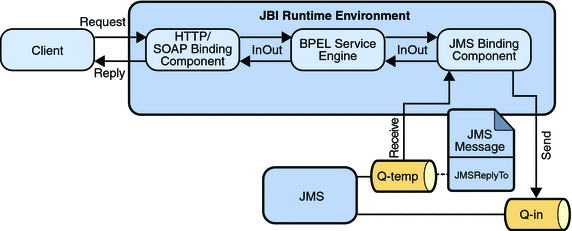Outbound InOut Exchange Scenario
In this use case, the JMS Binding Component receives an InOut exchange from its consuming partner (for example, the BPEL Service Engine).
It denormalizes the message found in the "In" portion of the InOut message exchange to a JMS message. It then creates a temporary queue or topic, "Q-temp", and sets the JMS message property, called JMSReplyTo, with this temporary queue or topic. It sends the JMS message to the request queue "Q-in". It waits to receive the reply (a JMS message) from the temporary queue or topic.
When it receives the reply message from the temporary queue or topic, it normalizes the JMS message and sets it as the message in the "Out" portion of the InOut message exchange.
It then sends the InOut message exchange to the consuming partner. Finally, it waits for the message exchange status from the consuming partner to complete the InOut message exchange.

- © 2010, Oracle Corporation and/or its affiliates
